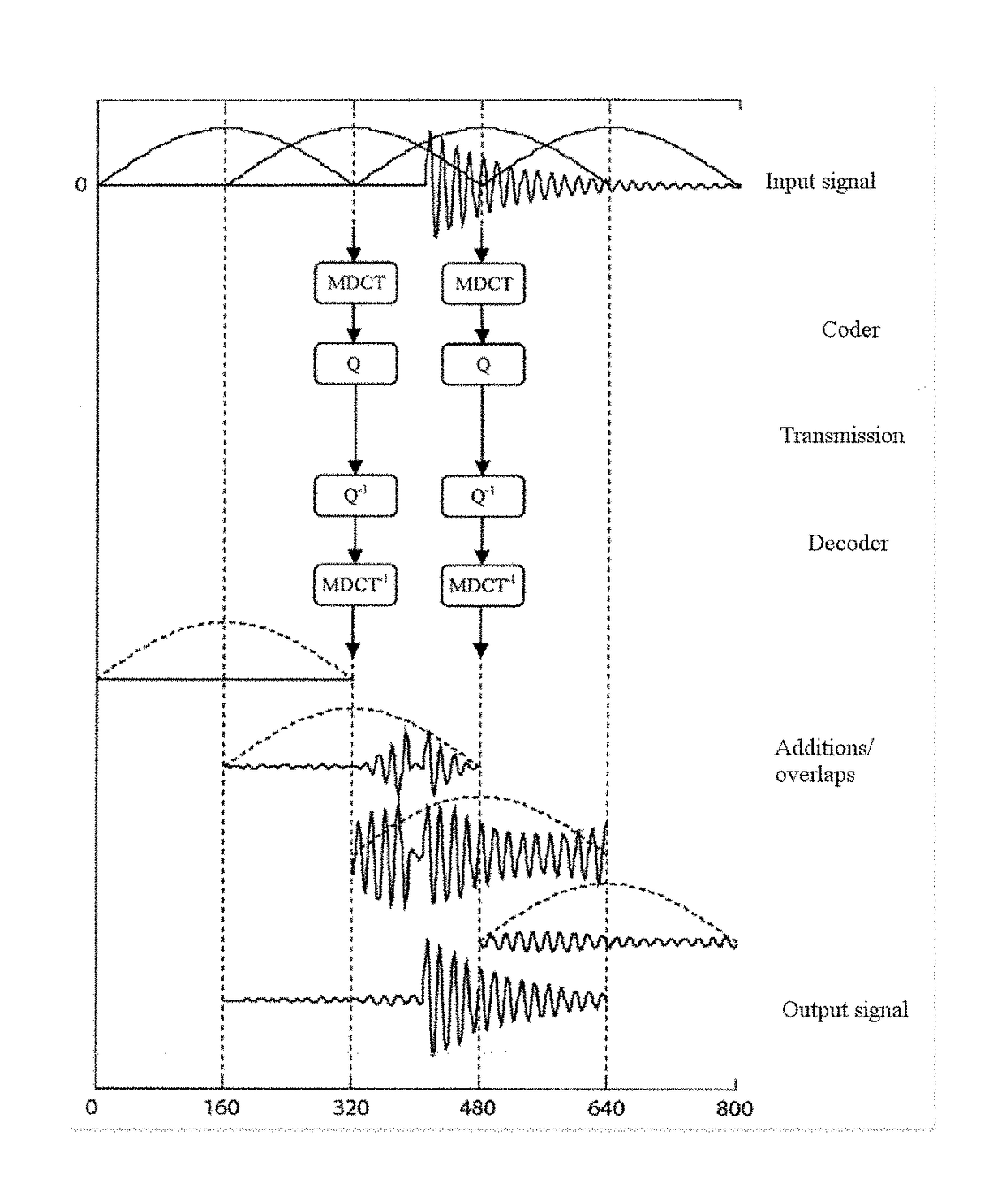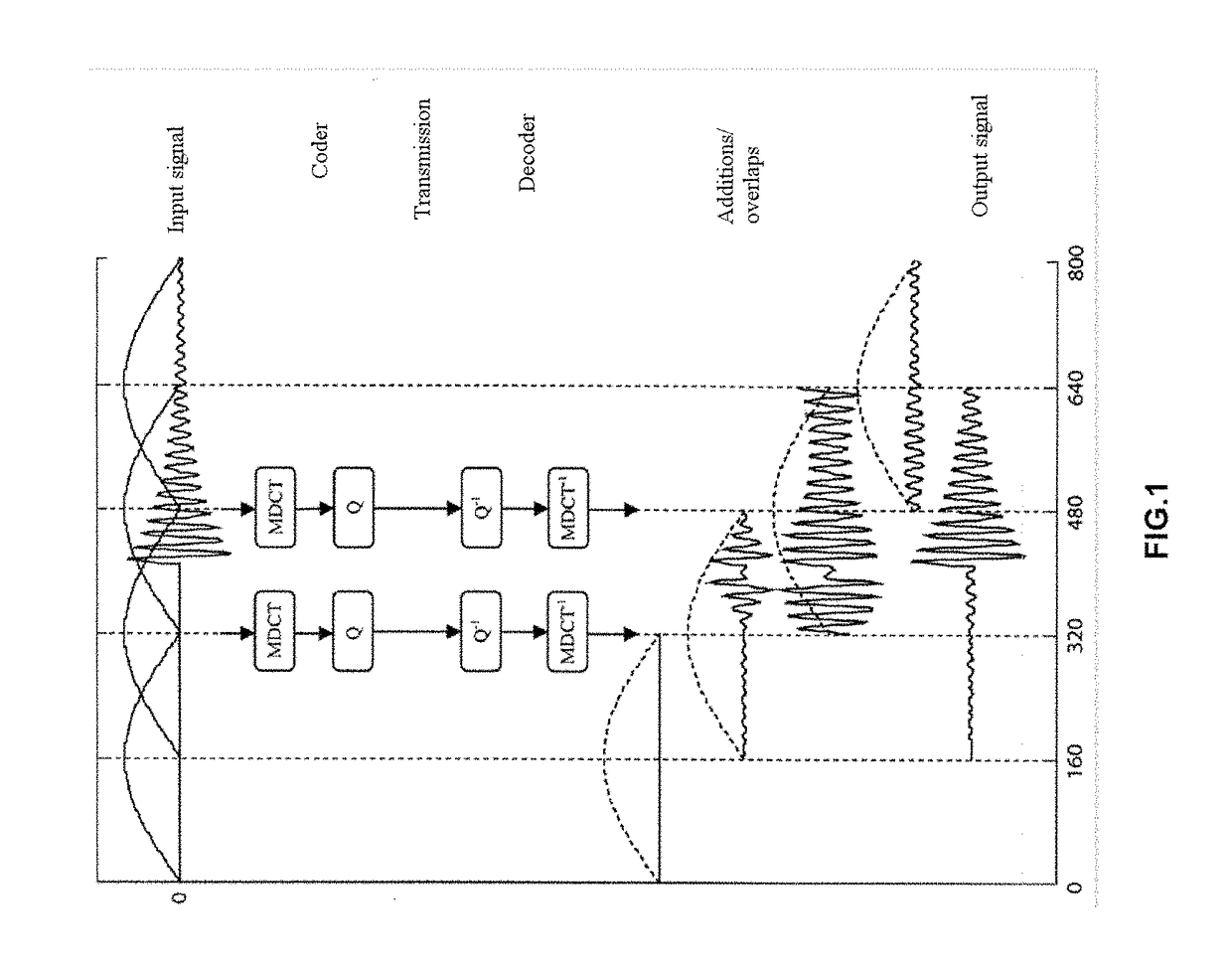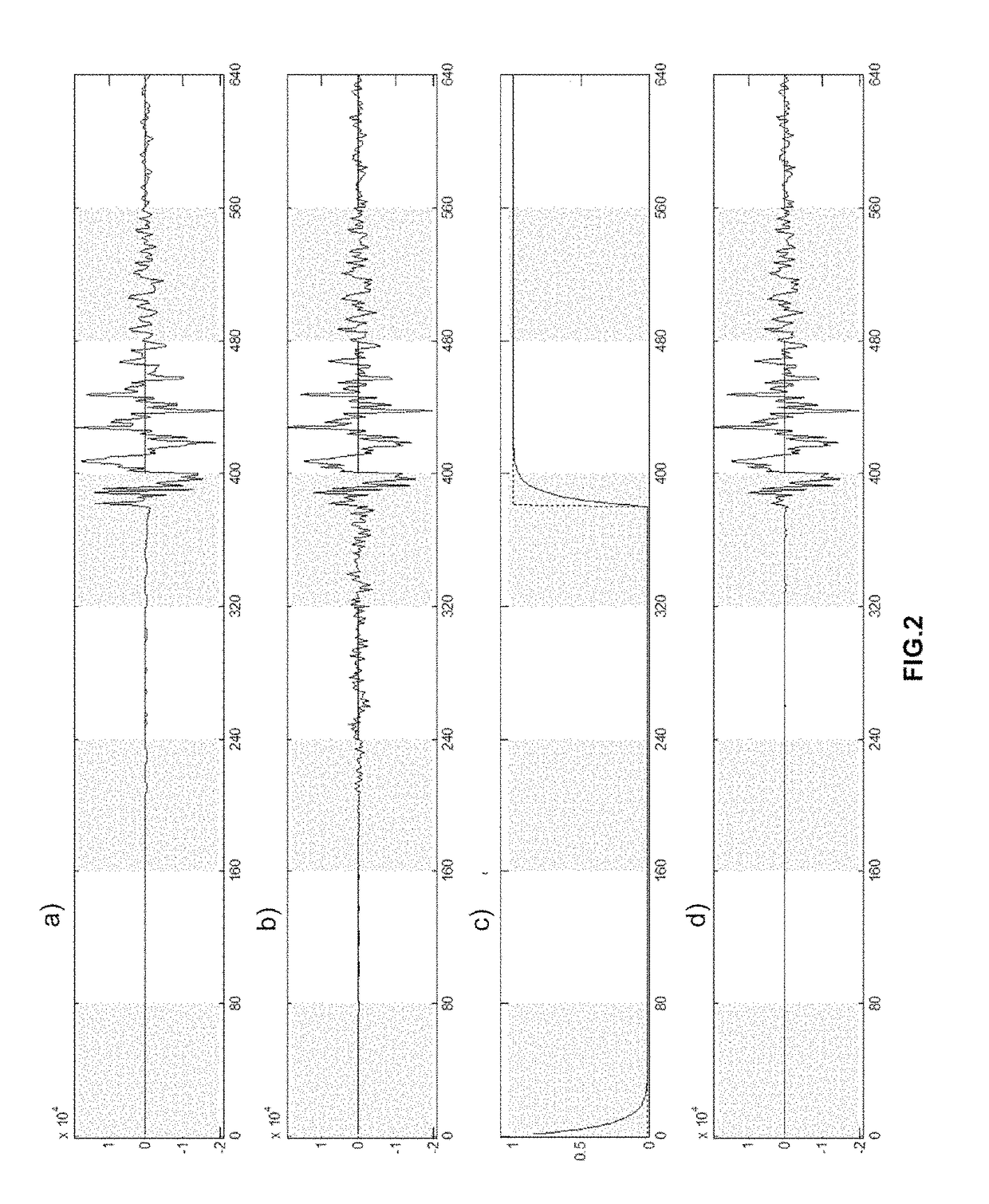Discrimination and attenuation of pre echoes in a digital audio signal
a digital audio signal and preecho technology, applied in the field of discrimination and attenuation of preechos in the decoding of digital audio signals, can solve the problems of large number of samples, disturbing listening, and disturbing, and the length of blocks is great in terms of sample number
- Summary
- Abstract
- Description
- Claims
- Application Information
AI Technical Summary
Benefits of technology
Problems solved by technology
Method used
Image
Examples
Embodiment Construction
[0072]Referring to FIG. 5, a pre-echo discrimination and attenuation processing device 600 is described. The attenuation processing device 600 as described hereinbelow is included in a decoder comprising an inverse quantization module 610 (Q−1) receiving a signal S, an inverse transform module 620 (MDCT−1), an add-overlap signal reconstruction module 630 (add / rec) as described with reference to FIG. 1 and delivering a reconstructed signal xrec(n) to the discrimination and attenuation processing device according to the invention. It can be noted that the example of the MDCT transform which is most commonly used in speech and audio coding is taken here, but the device 600 applies equally to any other type of transform (FFT, DCT, etc.).
[0073]At the output of the device 600, a processed signal Sa is supplied in which a pre-echo attenuation has been performed.
[0074]The device 600 implements a pre-echo discrimination and attenuation processing method in the decoded signal od xrec(n).
[0075...
PUM
 Login to View More
Login to View More Abstract
Description
Claims
Application Information
 Login to View More
Login to View More - R&D
- Intellectual Property
- Life Sciences
- Materials
- Tech Scout
- Unparalleled Data Quality
- Higher Quality Content
- 60% Fewer Hallucinations
Browse by: Latest US Patents, China's latest patents, Technical Efficacy Thesaurus, Application Domain, Technology Topic, Popular Technical Reports.
© 2025 PatSnap. All rights reserved.Legal|Privacy policy|Modern Slavery Act Transparency Statement|Sitemap|About US| Contact US: help@patsnap.com



